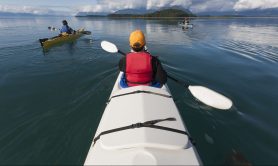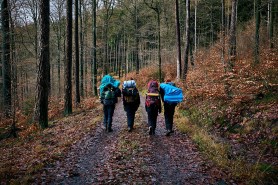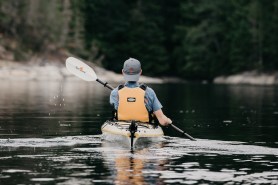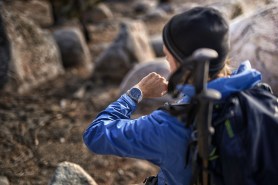

As a survivalist, Bear Grylls has had to find his way out of all types of inhospitable terrain, and sometimes his escape is down a river, as he once had to build a raft in the Borneo Jungle in Man Vs. Wild.
Videos by Outdoors with Bear Grylls
If you’re lost, following a river can be a good navigational tool as it will eventually lead to the sea or, often, a village along the way. But walking along a riverbank can be slow, and the ground may be too swampy to traverse on foot, so you may consider building a raft. That said, you need to assess the river first to see if it’s safe.
“Rafts are of most use on slow-flowing jungle rivers,” says Bear in Born Survivor. “In mountains, they run the risk of being smashed apart by rocks.”
Jungles also have a lot of great materials for building rafts: bamboo and balsa for a lightweight platform and vines for lashing, as well as branches that can be used as oars. Your raft design might depend on what material is available; scan the riverbank for what you can use. Make sure the material you use will float well.

How to make a balsa raft
Balsa wood is lightweight, floats well and is easy to cut. You can also peel the bark from the tree in strips and use it for lashing.
To assemble the raft, cut six trunks about a neck-width in diameter (6 or so inches) and around 3 yards long. Lay them on the ground side by side. Lay two thinner trunks about a yard long across these perpendicularly. Then lash the larger trunks forming the main structure to the cross-wood using the bark lashing at regular intervals.
How to make a bamboo raft
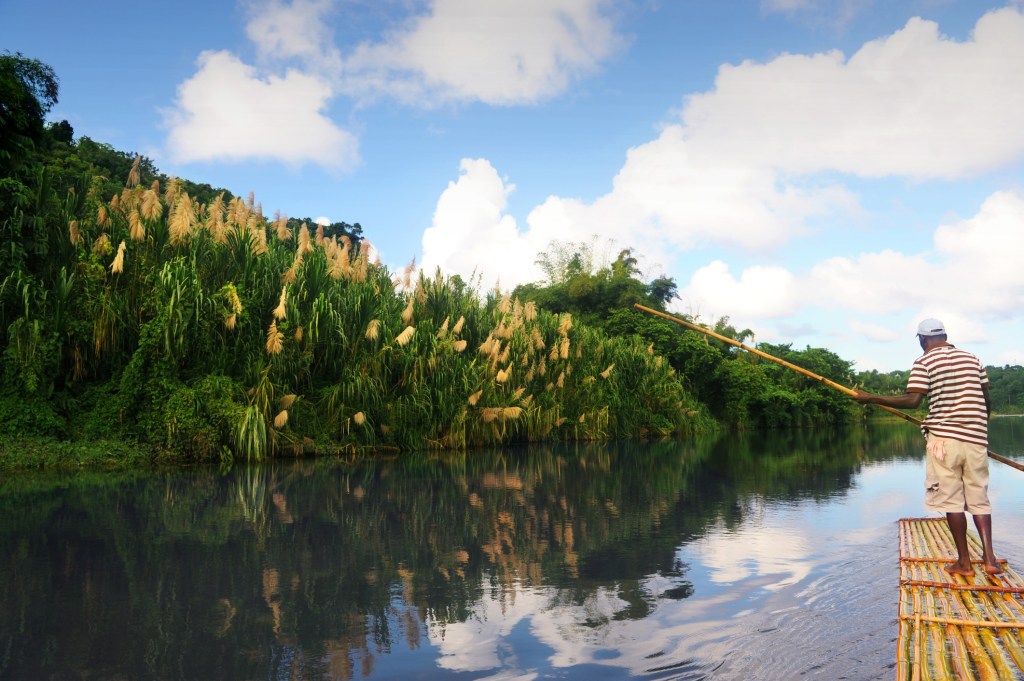
Bamboo is another useful material to work with, thanks to its strength, flexibility and hollowness. “Bamboo is great for raft-building; it’s so buoyant,” says Bear.
Start with cutting down the longest and thickest bamboos you can find. Then chop them into lengths around 3 yards long, retaining the portion that’s the thickest and cutting them off before they start to narrow at the top. Lay side by side enough bamboos to be wide enough to make a platform.
Next, drill holes with your knife or something sharp at the end of each bamboo. Make a third hole halfway along each bamboo. Line up all the holes and thread thick vines through the holes from one side to the other. Do this again to make a second similarly sized platform and lash those together in two layers to make the raft sturdy enough to support you.
How to make a simple log raft
For this one, you’ll be using the logs as an armature for a tarp rather than creating a full platform. Take two thick tree branches or trunks of young trees that are as straight as possible and ideally a foot in diameter. Lash them together with vines at both ends, leaving around two feet of slack vine between them. You can either cover this area with a tarp or nestle. your body across the two logs to float downstream.
How to steer a raft
Rafts are tricky to steer, so are best for floating downstream on a river rather than navigating somewhere in the open sea or large lake. You should be able to drift with the curretn, but if the water is still, you may need to propel yourself along with a pole. In deeper water, you can use a paddle. In any case, have at least one of these tools at the ready even if you start out slowly floating.
That said, the best way to steer a raft is to make a tiller. To do, assemble an A-frame from two branches or bamboos and attach the two ends so the A’s point juts out from the back of the raft. Then, install a long pole perpendicularly inside the top of the A-frame down into the water. When you move the pole, this will steer the raft.

Bear’s general rafting tips:
- Make sure your raft is sturdy—you don’t want it to sink or break apart. Lash everything with more vine or bark than you think it needs.
- Attach yourself to the raft with a rope and bowline and also attach your paddle.
- Test the raft first in shallow water before setting off.
- Keep near river banks in case of emergency.
- While navigating river bends, stay near the inside edge.
- Listen for the sound of rapids, white water or waterfalls and if you hear anything, steer to the bank and get out.
- Don’t raft at night.
- Don’t run a rapid on the raft. If you have to go through it, let the raft go through on its own and skirt around on foot to rejoin it.
More from Bear Grylls:
- How to Make a Toothbrush in the Wild
- Driving in the Snow
- How to Build Shelter in a Forest
- How to Survive Sub-Zero Temperatures
- What to do If You’re Bitten by a Snake
- How to Navigate Without a Compass
- How to Deal with Injuries in Survival Situations
- How to Find Water in the Mountains
- Making Shelter in the Snow
- Priorities of Survival
- How Bear Grylls Lights a Fire


